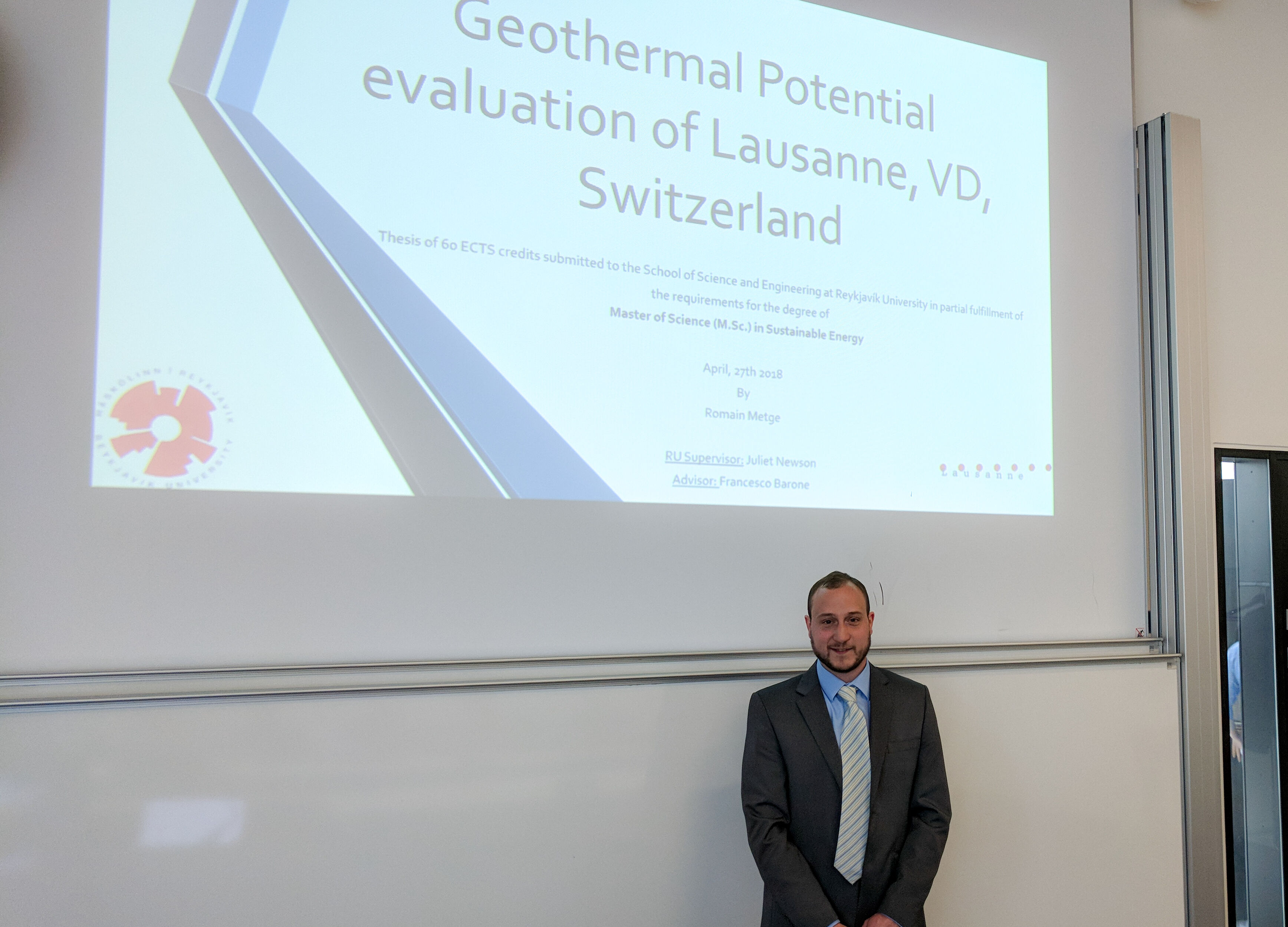Romain Metge successfully defends his master’s thesis
 Last week, MSc of Sustainable Energy Science student at Iceland School of Energy (ISE), Romain Metge successfully defended his master’s thesis project, in which he evaluated the geothermal potential of Lausanne, Switzerland. Romain was supervised by Juliet Newson from Reykjavik University and Francesco Barone from Services Industriels de Lausanne (SiL).
Last week, MSc of Sustainable Energy Science student at Iceland School of Energy (ISE), Romain Metge successfully defended his master’s thesis project, in which he evaluated the geothermal potential of Lausanne, Switzerland. Romain was supervised by Juliet Newson from Reykjavik University and Francesco Barone from Services Industriels de Lausanne (SiL).
In his thesis, Romain focused on interpreting seismic data, building a 3-dimensional geological model of the Lausanne area and building a dynamic flow model. The purpose of his project was to propose an exploratory well design in Lausanne and conclude on the region’ geothermal potential.
Romain ran all data using the TOUGH2 software and used FEFLOW to run the simulation of groundwater flow, and mass and heat transfer. He also ran a Monte Carlo simulation to assess the most probable flow rate. In his study, Romain used data from previous studies and compared them with data from other countries, such as Germany. His Monte Carlo simulation shows that a flow rate of 20 L/s seemed to be the most probably result of all. Finally, to locate the best drilling spot for an exploitation well, Romain ran a seismic study.
The results of Romain’s study is essential in helping the city with its sustainable development plan. However, Romain expressed that the implementation of this research is fundamentally limited by the city’s budget and financial plans. To read more about his work, click on the following link .
 Last week, MSc of Sustainable Energy Science student at Iceland School of Energy (ISE), Romain Metge successfully defended his master’s thesis project, in which he evaluated the geothermal potential of Lausanne, Switzerland. Romain was supervised by Juliet Newson from Reykjavik University and Francesco Barone from Services Industriels de Lausanne (SiL).
Last week, MSc of Sustainable Energy Science student at Iceland School of Energy (ISE), Romain Metge successfully defended his master’s thesis project, in which he evaluated the geothermal potential of Lausanne, Switzerland. Romain was supervised by Juliet Newson from Reykjavik University and Francesco Barone from Services Industriels de Lausanne (SiL).In his thesis, Romain focused on interpreting seismic data, building a 3-dimensional geological model of the Lausanne area and building a dynamic flow model. The purpose of his project was to propose an exploratory well design in Lausanne and conclude on the region’ geothermal potential.
Romain ran all data using the TOUGH2 software and used FEFLOW to run the simulation of groundwater flow, and mass and heat transfer. He also ran a Monte Carlo simulation to assess the most probable flow rate. In his study, Romain used data from previous studies and compared them with data from other countries, such as Germany. His Monte Carlo simulation shows that a flow rate of 20 L/s seemed to be the most probably result of all. Finally, to locate the best drilling spot for an exploitation well, Romain ran a seismic study.
The results of Romain’s study is essential in helping the city with its sustainable development plan. However, Romain expressed that the implementation of this research is fundamentally limited by the city’s budget and financial plans. To read more about his work, click on the following link .